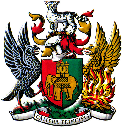Topic categories:
(Alphabetical)
You need to be signed in to respond to this topic
 | ![Previous page [or press the "Left arrow" key] Previous page](../resource/colour_tint_inc.php?img_file=left-arrow.png&clr=AA5511) | Displaying 16 to 14 of 14 posts Page 2 of 1 |  |  |
You need to be signed in to respond to this topic
 | ![Previous page [or press the "Left arrow" key] Previous page](../resource/colour_tint_inc.php?img_file=left-arrow.png&clr=AA5511) | Displaying 16 to 14 of 14 posts Page 2 of 1 |  |  |
Previous (older) topic Video Rental Stores | | | Next (newer) topic Gosford Street |
| You are currently viewing topics in All categories View topics only in the Buildings category | ||
Website & counter by Rob Orland © 2024
Load time: 143ms
